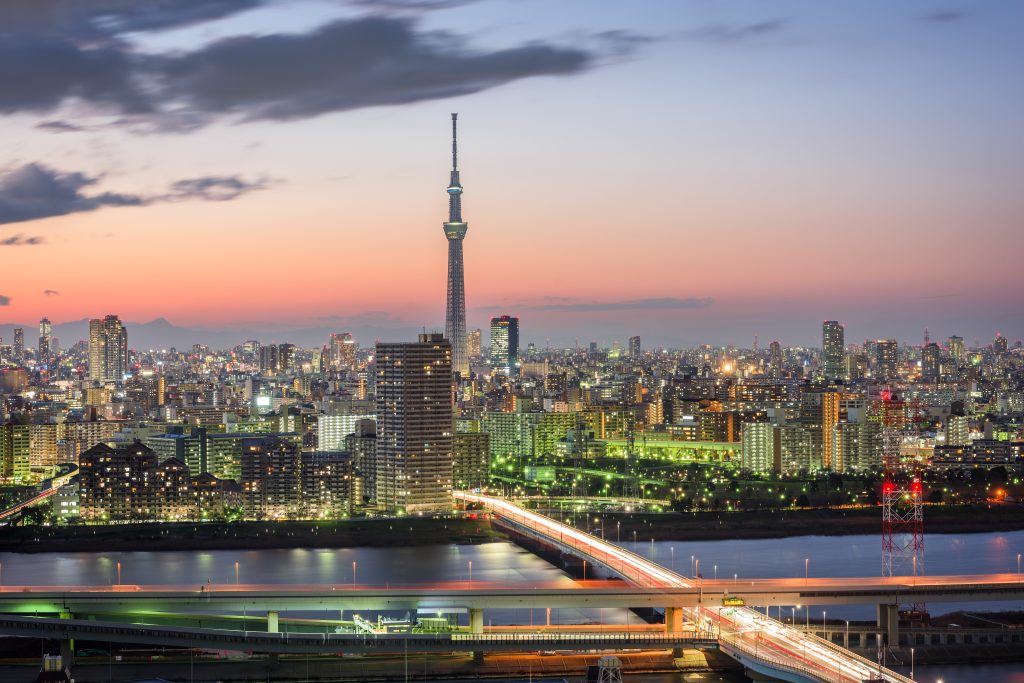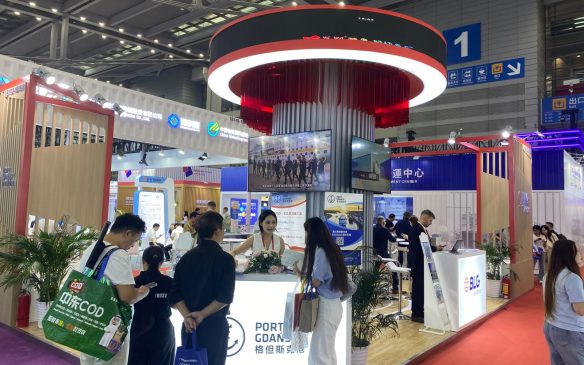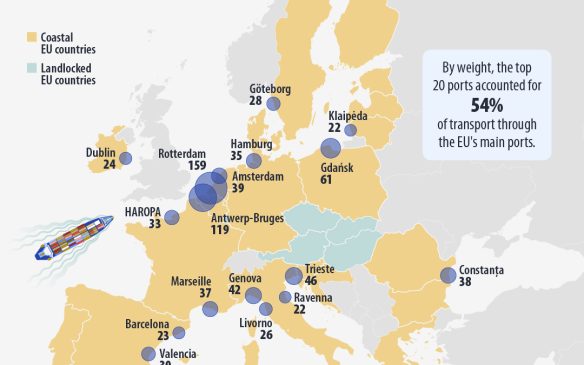The Gdańsk Port Business Mixer opens doors to the Asian market for Polish exporters

In the era of globalisation and dynamically changing directions of trade, Japan – the fourth largest economy in the world – is becoming one of the most promising markets for Polish exporters. This year’s economic mission of the Port of Gdańsk, which is scheduled to take place on 27 November 2025 in Tokyo, may become a catalyst for the development of Polish-Japanese trade relations. For the Japanese, it is an opportunity to recognise investment potential and build new distribution channels for goods on the EU market. And for domestic manufacturers? It is an opportunity to increase exports of goods from Poland to the Land of the Rising Sun.
The Port of Gdańsk is the largest seaport in Poland and one of the key players in the Baltic Sea region. It is the only Polish seaport that connects business partners from various places around the world, such as Singapore, Korea and Vietnam, every year. This time, the economic mission of the Port of Gdańsk is going to Japan. It is not an accidental choice, as Japan has been setting standards in global shipping, shipbuilding, as well as port and logistics innovations for decades. This event is therefore a unique opportunity for Polish companies to initiate or deepen partnerships with partners from the Far East.
The Gdańsk Port Business Mixer is part of a long-term strategy to build the global position of the Polish maritime economy and develop foreign trade. During the B2B session, participants of the event in Tokyo will have the opportunity to talk directly with Japanese importers, distributors and investors. As the organiser and initiator of the project, the Port of Gdańsk provides substantive and logistical support to the mission participants.
Representatives of the agri-food sector will have a special opportunity to discuss export development, as this sector can benefit from Japan’s economic specifics, in particular its low food self-sufficiency and high dependence on food imports. Poland, with its modern agriculture, high-quality production and competitive prices, has an opportunity to make its presence felt in this market segment. However, growth potential is also evident in other areas, such as logistics and intermodal transport, modern technologies for ports and the maritime industry, shipbuilding and vessel servicing, chemical and pharmaceutical products, sustainable energy solutions and green technologies.
‘Thanks to the dynamic development of its infrastructure and its growing importance in European port and maritime logistics and the economy, the Port of Gdańsk is becoming a natural operational centre for entrepreneurs wishing to conduct business on Far Eastern markets. This is because the Port of Gdańsk is currently the largest container hub in the Baltic Sea and plays a strategic role in the export of goods to Asian countries’, emphasises Dorota Pyć, President of the Port of Gdańsk.
For Polish companies – regardless of their size and industry – the Port of Gdańsk Business Mixer in Tokyo is an opportunity that can lead to specific contracts, joint projects and lasting partnerships. In a world where the importance of Asian markets continues to grow year on year, Japan appears to be a key destination for export expansion, and the November event could be the first step towards tapping into this market.
Trade potential: challenges and new opportunities
Japan is the third largest economy in the world (excluding the EU) in terms of nominal GDP, after the US and China. With over 124 million inhabitants, the country is one of the largest consumer markets in the world. For Polish companies, this means one thing – a real opportunity for expansion.
The imports from Japan significantly exceed the exports. In 2024, the value of exports from Poland to Japan reached approximately USD 1.2 billion. Imports to Poland, on the other hand, reached a value of approximately USD 2.5 billion. When we compare this to 2023, both exports and imports from Japan increased by about 10%, which shows how much our trade partnership has grown. Poland mainly exports car parts, graphite, detergents, and agricultural and food products such as frozen beef, feathers and down. We import advanced machinery, electronic equipment, cars and industrial components from Japan.
The signing of the Economic Partnership Agreement (EPA) between the EU and Japan in 2019 was a milestone in our economic partnership. The agreement has removed a number of trade barriers, loosened the rules governing the exchange of agricultural and food products, and increased the competitiveness of European companies on the Japanese market. Polish beef gained recognition among Japanese consumers, and exports of premium food products began to grow rapidly.
Another driving force was the decision of Japan’s Chief Veterinary Officer in July 2024 to lift the ban on imports of Polish poultry meat and egg products. This opened up the market for one of the key sectors of Polish exports, as Poland is the largest poultry manufacturer in the European Union and the third largest in the world. And so, poultry meat and dairy products joined the main groups of goods exported to Japan. On top of that, Polish machinery and mechanical equipment are becoming increasingly popular on the Japanese market, which is reflected in increased exports.
Japanese consumers more and more often choose high-quality imported products. In addition to poultry meat, frozen fruit and vegetables, confectionery, sweets, ready meals, as well as alcohol, non-alcoholic beverages and organic food have become increasingly popular. The Polish agri-food sector, known for its quality and safety, can effectively respond to these needs.
This is why Poland, as part of Expo 2025 Osaka and the accompanying events, is very actively promoting its products in Japan this year. Exhibitions such as Foodex Japan 2025 and the Polish-Japanese Export Forum in Osaka provided a space to promote Polish brands and products.
However, the low recognition of Polish brands in Japan, the need to build relationships with local distributors, and logistical issues caused by the long distance between the two countries remain a challenge.
Japanese investment in Poland
The Port of Gdańsk hopes that Business Mixer will encourage Japanese investors to be even more willing to do business in Poland, maybe even in the port itself or nearby, because there is no shortage of attractive investment areas in the Pomeranian Special Economic Zone. The Port of Gdańsk Authority still has land available that can be used for cargo handling and other port and maritime activities.
According to the National Bank of Poland, in 2022, Japan was the third largest investor from outside the EU, behind only the USA and South Korea. Japanese companies have implemented 66 investment projects worth approx. EUR 2.5 billion in Poland, creating over 17,000 jobs since 2020. In what industries? The Japanese have invested in the automotive industry – Toyota factories in Wałbrzych and Jelcz manufacture internal combustion engines and drives for hybrid vehicles. Toyota’s total investment amounted to PLN 6 billion and the company created more than 3,000 jobs. Bridgestone, a manufacturer of tyres and rubber products, has been present on the Polish market for over 20 years. Its factory in Poznań is one of the most modern in the world.
The Japanese chemical industry and Sumika, a company manufacturing polypropylene-based compounds in Plewiska near Poznań, have also invested in the automotive supply chain. The third European factory of Nippon Seiki has been operating in Ksawerów near Łódź since 2019. It is the market leader in high-end head-up displays (HUD) for mid-range and premium cars. As many as 11 investments in the Łódź Special Economic Zone are carried out by such giants as Fuji and Fujitsu. The Japanese have also invested in the brewing industry. They are currently the largest beer manufacturers in our country since the Asahi group became the owner of the Polish Kompania Piwowarska in 2017. The latest major Japanese project in Poland is a heat pump production facility of the technology giant Daikin in Ksawerów.
It is also worth mentioning that the Japan Bank for International Cooperation has granted White Eagle Energy Ltd., owned by Japanese shipowner Mitsui O.S.K., a loan for the purchase of a newly built floating storage and regasification unit (FSRU) for liquefied natural gas, which is to be moored in the Port of Gdańsk. The vessel is under construction at the Hyundai Heavy Industries shipyard in South Korea, commissioned by Gaz-System. Its commissioning in the waters of the Gulf of Gdańsk is planned for late 2027/early 2028.
On top of that, in March this year, Japanese container shipping company Ocean Network Express (ONE) launched a new feeder service to the Port of Gdańsk. The PLS (Polish Shuttle) service connects Hamburg and Rotterdam with Gdynia and Gdańsk. As part of the PLS, ONE ships also call at the Baltic Hub terminal in Gdańsk. The shipowner Ocean Network Express has its office in Gdynia and operational facilities for the whole of Europe in Gdańsk, operating since 2018. Ocean Network Express is one of the world’s leading container shipping carriers. It is estimated to rank sixth in this market. The ONE brand was created as a result of the merger of three Japanese shipping companies (K Line, MOL and NYK), which operate globally under a common brand. The company offers its services to over 100 countries, and its trademark is magenta-coloured container ships.
Through Gdańsk to Japan
Over the last 5 years, imports from Japan to Poland (via the Port of Gdańsk) amounted to 213,000 tonnes (PLN 7.5 billion), while exports amounted to 240,000 tonnes (PLN 3.8 billion). As a result, the Polish market mainly received chemicals, plastics, cast iron and steel, as well as cars. Exports through the Port of Gdańsk mainly included Polish meat and offal, animal feed, copper and products made of copper, furniture, bedding, mattresses, lamps, and dairy products, eggs, and honey.
First, registration
How can you participate in the Business Mixer? Entrepreneurs who want to participate in this event together with the Port of Gdańsk must first register by filling out the application form at: mixer.portgdansk.pl.



